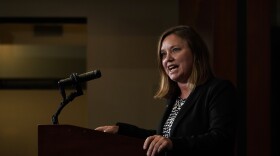Just a few weeks before a new state budget must be approved, an independent analysis says the commonwealth may not have all the money it needs.
Amid the coronavirus pandemic, state lawmakers passed a stop-gap budget in June to set government funding for schools, agencies and services through November.
The next spending plan will go through June. But according to an early analysis by the independent Pennsylvania Budget and Policy Center, the commonwealth will be more than $3 billion short, thanks in large part to lower economic activity because of the pandemic.
Gov. Tom Wolf proposed a $36 billion spending plan to fund the commonwealth through June. Though the state’s Independent Fiscal Office estimates the commonwealth will bring in about $35 billion in revenue by June, the Budget and Policy Center asserts, after taking tax refunds and lapses from the prior year into effect, revenue may be closer to $32.6 billion.
Director Marc Stier said the state could use short-term borrowing to help plug that hole.
“Governments often borrow to deal with the immediate problem because it doesn’t make sense from a point of view of intergenerational justice for people living at one time, in one year, to bear the whole burden of dealing with something that’s a long term crisis,” Stier said during a press briefing.
The big question marks hanging over the budget-making process are whether the federal government will send more financial aid and whether the economy will pick back up and generate more tax money.
If that doesn’t happen, Stier said things like short-term borrowing and using money from the state’s rainy day fund will only go so far.
“The problem is if you do it to such an extent, you dig yourself a very deep hole for the next fiscal year, and my fear is that we’re digging ourselves a very deep hole,” he said.
The Center’s analysis suggests most agencies that receive state funding will get the same amount they did under the budget passed in June.
State lawmakers are still discussing how to distribute the remaining $1.3 billion dollars in federal pandemic relief funds.
If approved as part of the budget, Stier said most of that money is expected to go to healthcare and emergency service groups.
Read more from our partners, WITF.




